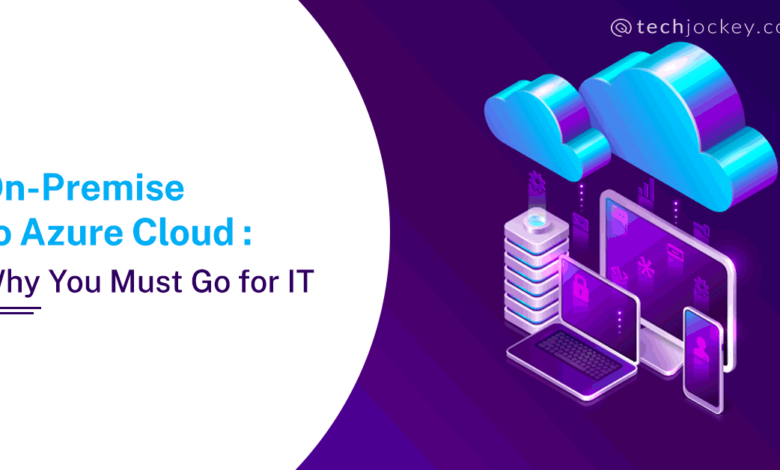Top Tips for Successful Integration of Azure and On-Premises Systems

Are you looking to seamlessly integrate your Azure cloud services with your on-premises systems? Look no further! In this blog post, we will share the top tips and best practices for successfully integrating Azure and on-premises systems. Whether you’re a seasoned IT professional or just starting out, these tips will help you streamline your operations, increase efficiency, and maximize the benefits of both cloud and on-premises technologies. Let’s dive in!
Introduction to Azure and On-Premises Integration
Are you ready to take your business to the next level by seamlessly integrating Azure with your on-premises systems? The power of combining cloud technology with your existing infrastructure opens up a world of possibilities and efficiencies. In this blog post, we will explore top tips for successful integration that will help you navigate through the process smoothly and unlock the full potential of Azure cloud professional service. Let’s dive in!
Benefits of Integrating Azure with On-Premises Systems
Integrating Azure with on-premises systems offers a myriad of benefits for businesses looking to modernize their IT infrastructure. One key advantage is the scalability that Azure provides, allowing companies to easily expand their resources as needed without the hassle of physical upgrades. This flexibility not only saves costs but also ensures seamless operations.
Another benefit is enhanced security through Azure’s robust features such as encryption, identity management, and compliance certifications. By integrating with Azure, organizations can strengthen their data protection measures and mitigate risks effectively.
Moreover, by leveraging Azure’s advanced analytics and artificial intelligence capabilities, businesses can gain valuable insights from their combined on-premises and cloud data sources. This empowers decision-making processes and drives innovation within the organization.
Common Challenges Faced during Integration
Integrating Azure with on-premises systems can be a game-changer for businesses, but it’s not without its challenges. One common obstacle faced during integration is the complexity of different technologies and platforms. Trying to make them work seamlessly together can often lead to compatibility issues and delays.
Another challenge is ensuring secure communication between the cloud and on-premises environments. With sensitive data being transferred back and forth, maintaining robust security measures is crucial to prevent any breaches or unauthorized access.
Data migration poses yet another hurdle in the integration process. Moving large volumes of data from on-premises servers to the cloud without disruptions or loss requires careful planning and execution. Any errors in this step can result in data corruption or downtime for critical business operations.
Furthermore, lack of proper testing and monitoring mechanisms can also impede successful integration. Without thorough testing at each stage of the process, identifying and resolving potential issues becomes increasingly difficult.
In navigating these challenges, businesses need a strategic approach that encompasses thorough planning, robust security protocols, efficient data migration strategies, as well as rigorous testing and monitoring procedures. By addressing these hurdles head-on, organizations can achieve seamless integration between Azure cloud services and their existing on-premises systems.
Top Tips for Successful Integration:
When it comes to successfully integrating Azure with on-premises systems, proper planning and analysis are key. Before diving into the integration process, take the time to understand your current systems, identify goals, and map out a clear strategy.
Choosing the right tools and technologies is crucial for seamless integration. Evaluate different options available in the market based on compatibility, scalability, and ease of implementation. Selecting the best fit for your specific requirements can significantly impact the success of your integration project.
Security considerations should not be overlooked when connecting Azure with on-premises systems. Implement robust security measures to safeguard data during transit and at rest. Encryption, access controls, and regular security audits are essential components of a secure integration solution.
Effective data migration strategies play a vital role in ensuring smooth transition between cloud-based and on-premises systems. Plan meticulously for data mapping, transformation, and validation processes to prevent any disruptions or loss of information during migration.
Thorough testing and continuous monitoring are indispensable steps in achieving successful integration outcomes. Conduct comprehensive tests across various scenarios to identify potential issues early on. Implement monitoring tools to track performance metrics post-integration for ongoing optimization efforts.
Proper Planning and Analysis
Proper planning and analysis are key components when integrating Azure with on-premises systems. Before diving into the integration process, it’s essential to have a clear understanding of your organization’s goals and requirements. Conduct a thorough assessment of your current infrastructure to identify potential areas for improvement.
Create a detailed roadmap that outlines the steps involved in the integration process. Define roles and responsibilities within your team to ensure smooth execution. Consider factors such as data volume, complexity of workflows, and scalability requirements when planning the integration.
Gather input from stakeholders across different departments to gather diverse perspectives and insights. Collaboration is crucial for successful integration efforts. Additionally, consider conducting a risk assessment to anticipate any potential challenges that may arise during the integration process.
Choosing the Right Tools and Technologies
When integrating Azure with on-premises systems, choosing the right tools and technologies is crucial for a seamless transition. It’s essential to assess your specific integration needs and select solutions that align with your goals. Consider factors like scalability, compatibility, and ease of deployment when evaluating different options.
Explore Microsoft’s range of integration services such as Azure Logic Apps, Azure Service Bus, or Azure API Management to streamline communication between cloud and on-premises environments. These tools offer flexibility and customization to meet diverse integration requirements efficiently.
Additionally, leverage third-party solutions like MuleSoft or Dell Boomi for enhanced capabilities in data transformation and connectivity. By utilizing industry-leading technologies tailored to your organization’s unique setup, you can optimize performance and maximize productivity during the integration process.
Security Considerations
When integrating Azure with on-premises systems, security considerations play a critical role in ensuring the protection of sensitive data. It is essential to implement robust security measures to safeguard against potential threats and breaches.
One key tip for successful integration is to prioritize access control by implementing role-based permissions and authentication protocols. This helps prevent unauthorized access to data and resources within the integrated environment.
Encryption also plays a vital role in enhancing security during integration. By encrypting data both at rest and in transit, organizations can add an extra layer of protection against cyber threats.
Regular monitoring and auditing of system activities are crucial for detecting any anomalies or suspicious behavior that may indicate a security breach. Implementing advanced threat detection tools can help organizations stay one step ahead of potential security risks.
By prioritizing security considerations throughout the integration process, organizations can mitigate risks and ensure a secure environment for their Azure and on-premises systems to coexist harmoniously.
Data Migration Strategies
Data migration is a critical aspect of integrating Azure with on-premises systems. It involves transferring data from legacy systems to the cloud environment seamlessly and efficiently.
One key strategy for successful data migration is to prioritize which data needs to be moved first based on its importance and impact on business operations. This ensures a smooth transition without disrupting daily activities.
Another important consideration is choosing the right tools and methodologies for migrating data. Whether it’s using Azure Data Factory, SQL Server Integration Services, or other third-party solutions, selecting the most suitable option can streamline the migration process.
Additionally, implementing robust data validation processes during migration helps in ensuring data accuracy and integrity post-migration. Thoroughly testing migrated data sets before fully transitioning can help mitigate any potential risks or errors that may arise.
Incorporating automated scripts and monitoring tools can further enhance efficiency in tracking progress and identifying any issues promptly. Regularly monitoring the data migration process allows for real-time adjustments if needed, ultimately leading to a successful integration of Azure with on-premises systems.
Testing and Monitoring
When it comes to integrating Azure with on-premises systems, testing and monitoring play a crucial role in ensuring the success of the project. Testing helps identify any issues or bugs before deployment, while monitoring allows for real-time visibility into system performance.
During the testing phase, it’s essential to conduct thorough tests to validate data integrity, functionality, and compatibility across different platforms. Automated testing tools can streamline this process and help catch any potential errors early on.
Once the integration is live, continuous monitoring is key to detecting any anomalies or performance bottlenecks. Monitoring tools can provide insights into system health, resource utilization, and overall efficiency.
By implementing robust testing practices and setting up effective monitoring mechanisms, organizations can proactively address issues and optimize their Azure-on-premises integration for maximum efficiency.
Real-Life Examples of Successful Integrations
Real-life examples of successful integrations can provide valuable insights and inspiration for organizations looking to streamline their operations.
One such example is a multinational corporation that effectively integrated Azure with its on-premises systems to enhance data accessibility and collaboration among geographically dispersed teams.
Another success story involves a healthcare provider seamlessly integrating Azure cloud services with its existing infrastructure, resulting in improved patient care through real-time data analysis and secure communication channels.
Furthermore, a manufacturing company achieved significant cost savings by integrating Azure with its on-premises systems, enabling predictive maintenance of equipment and efficient inventory management.
These real-life examples highlight the diverse applications and benefits of integrating Azure with on-premises systems across various industries.
Future Possibilities with Azure and On-Premises Integration
As technology continues to evolve, the future holds endless possibilities for Azure and on-premises integration. With advancements in cloud computing and hybrid solutions, businesses can expect even greater flexibility and scalability in their IT infrastructure.
One exciting prospect is the seamless integration of IoT devices with Azure services, enabling real-time data processing and analysis across both on-premises and cloud environments. This convergence opens up new opportunities for automation, predictive maintenance, and improved decision-making processes.
Moreover, the rise of edge computing presents a promising direction for integrating local data processing capabilities with Azure cloud services. By leveraging edge devices closer to where data is generated, organizations can achieve lower latency, enhanced security, and increased efficiency in their operations.
Overall, as the boundaries between on-premises systems and the cloud continue to blur, businesses can look forward to a future where seamless integration enables them to harness the full potential of both environments simultaneously.
Conclusion:
In a rapidly evolving digital landscape, successful integration of Azure and on-premises systems is crucial for organizations to stay competitive and efficient. By following the top tips outlined in this article – proper planning, choosing the right tools, security considerations, data migration strategies, testing, and monitoring – businesses can navigate the complexities of integration with confidence.
Real-life examples have demonstrated how seamless integration can lead to enhanced productivity, streamlined processes, and improved decision-making capabilities. With continuous advancements in technology and cloud services like Azure professional service, the possibilities for future integrations are limitless.



